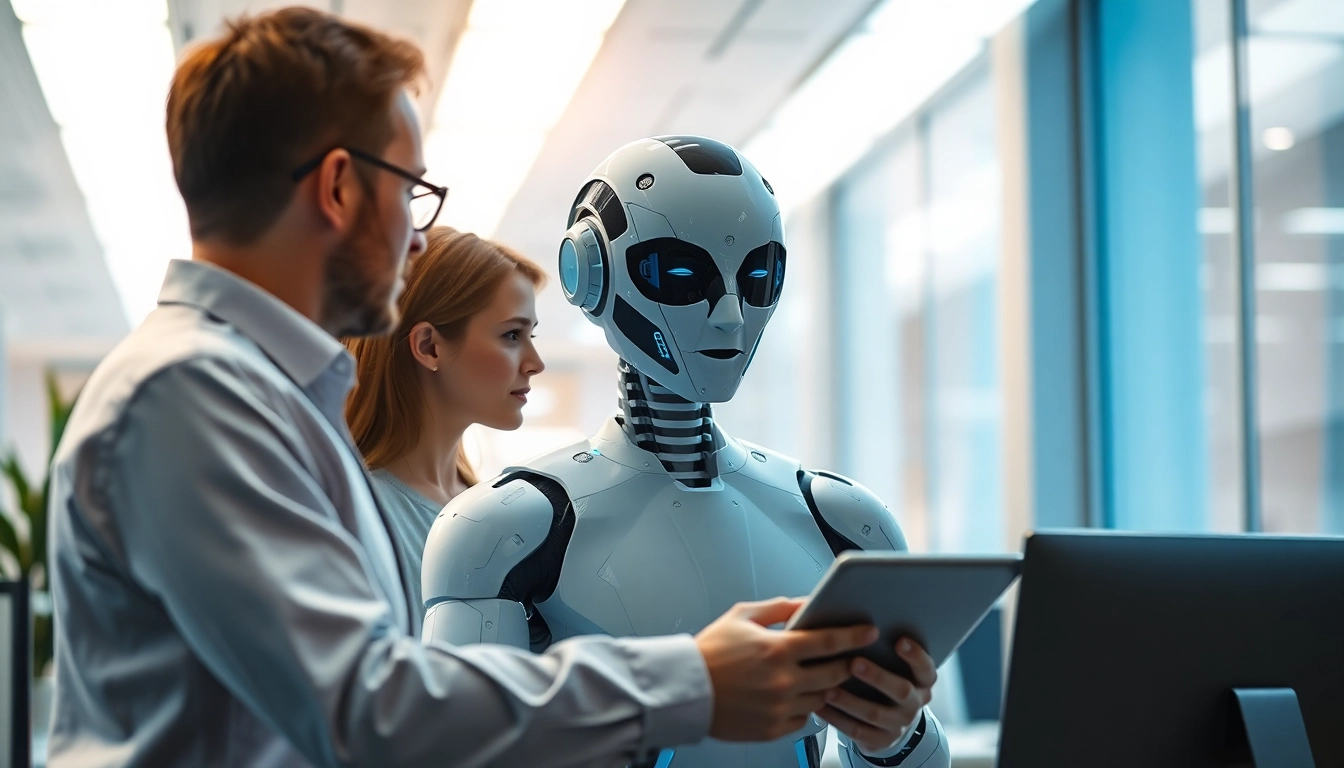
Understanding Agentic Human AI: The Future of Autonomous Decision-Making
Introduction to Agentic Human AI
As we stand on the brink of an unprecedented technological revolution, the concept of Agentic Human AI emerges as a transformational force within artificial intelligence (AI) frameworks. This innovative domain of AI emphasizes systems that can autonomously make decisions, adapt their strategies, and execute tasks with minimal human intervention, fundamentally reshaping our understanding of machine intelligence and collaboration between humans and technology. In this discourse, we delve deeply into the nuances, applications, advantages, and challenges presented by Agentic Human AI.
Definition and Key Characteristics
Agentic Human AI is characterized by its ability to function independently of direct human oversight. Unlike traditional AI systems, which require constant human inputs and supervision, agentic systems harness advanced algorithms and data analytics to operate effectively in dynamic environments. The key traits of Agentic Human AI include:
- Autonomy: The capability to perform tasks without explicit human instruction.
- Adaptability: The ability to change processes or strategies based on new data and environmental shifts.
- Goal Orientation: The function of pursuing specified objectives efficiently.
- Contextual Understanding: The capacity to comprehend and engage in the intricacies of human environments.
Historical Context and Development
The evolution of AI has traversed several phases, marking significant milestones from simple machine learning models to today’s sophisticated agentic frameworks. Early AI systems operated primarily on rule-based logic, heavily dependent on predefined algorithms. The emergence of computational power and big data analytics laid the foundation for machine learning techniques that could learn from data patterns, resulting in the development of Agentic Human AI. Pioneering projects focusing on autonomous robotics and self-learning systems illustrate how AI has transitioned from mere utilities to cognitive agents capable of higher-order functions.
Importance in Contemporary Applications
In contemporary settings, the implications of Agentic Human AI are vast. Industries such as healthcare, finance, and manufacturing are increasingly leveraging autonomous systems to streamline operations, optimize workflows, and enhance decision-making processes. For instance, in healthcare, AI-driven diagnostics can autonomously analyze patient data and suggest treatment options, thereby improving healthcare delivery while reducing human error.
Core Functions of Agentic Human AI
Autonomous Decision-Making
One of the salient features of Agentic Human AI is its ability to make decisions independently of human input. This functionality is vital for operations that require rapid responses in fluctuating conditions, such as in stock market trading or emergency response systems. By utilizing vast amounts of real-time data, these systems can evaluate scenarios and make informed choices that align with their programmed goals.
Contextual Understanding
Contextual understanding refers to an AI’s capacity to interpret and analyze the nuances of human behavior and environmental factors. Agentic systems resemble humans in that they assess their surroundings and adjust their actions based on context. This is especially beneficial in customer service applications where AI can gauge customer sentiment and tailor responses, creating more personalized experiences.
Task Execution with Minimal Supervision
With the ability to execute multiple tasks with little to no oversight, Agentic Human AI dramatically enhances productivity in various spheres. In manufacturing, for instance, robotic systems can operate assembly lines, adapt to new production schedules, and reduce downtime through predictive maintenance. This shift signifies a move towards fully automated processes that improve quality and efficiency.
Advantages and Opportunities
Enhancing Productivity and Efficiency
Agentic Human AI amplifies productivity through automation and improved operational efficiencies. By delegating routine tasks to autonomous systems, organizations can concentrate on strategic decision-making and creative endeavors. Data illustrates that businesses employing agentic AI achieve productivity increases of up to 30%, reflecting its potential to transform workplace dynamics.
Cost Reduction Through Automation
Automation via Agentic Human AI significantly reduces operational costs. By minimizing the reliance on human labor for repetitive and mundane tasks, companies can allocate resources more effectively. Automated systems lead to lower error rates and reduced training costs, creating a scenario where businesses can operate at lower margins yet achieve higher profits.
Improving Customer Experience
When integrated into customer service operations, Agentic Human AI facilitates enhanced customer interactions. Chatbots and virtual assistants, powered by advanced algorithms, can provide personalized responses and support 24/7, thereby increasing customer satisfaction and loyalty. The technology can analyze customer behavior and preferences, ensuring optimized service delivery that meets evolving customer expectations.
Challenges and Considerations
Data Management and Ethical Concerns
Despite the numerous benefits of Agentic Human AI, data management and ethical issues present significant challenges. The deployment of agentic systems involves handling large volumes of sensitive data, raising questions concerning privacy, security, and ethical use. Companies must ensure that their AI systems comply with regulations and ethical standards to garner public trust and avoid legal repercussions.
Integration with Existing Systems
Integrating Agentic Human AI into pre-existing IT infrastructures poses technical difficulties. Organizations need to assess compatibility issues between legacy systems and new AI tools thoroughly. Establishing a seamless integration process often requires significant investment in technology and human resources, which can deter businesses from fully realizing the potential of agentic systems.
Future Risks and Governance
The prospect of autonomous decision-making systems introduces concerns regarding oversight and governance. As Agentic Human AI systems become predominant, the potential for job displacement and the ethical imperative for accountability escalates. Organizations must navigate these risks by developing strategies to ensure AI governance that prioritizes transparency, accountability, and societal welfare in the deployment of these technologies.
Real-World Applications and Case Studies
Innovative Uses in Various Industries
The applications of Agentic Human AI span various sectors, from healthcare and finance to transportation and agriculture. In agriculture, for instance, AI-enabled systems can autonomously manage irrigation levels based on moisture sensors, enhancing resource efficiency. In finance, algorithmic trading platforms utilize agentic AI to optimize stock market performance by analyzing trends and executing trades at lightning speed.
Successful Implementations and Outcomes
Numerous case studies highlight the successful implementation of Agentic Human AI across industries. A notable example can be seen in the logistics sector, where companies like Amazon employ agentic systems to streamline supply chains. These systems optimize delivery routes, predict stock shortages, and automate inventory management, resulting in a significant enhancement in operational efficiency and customer satisfaction.
Future Trends in Agentic Human AI
As technology advances, the future of Agentic Human AI appears promising, with trends indicating that these systems will become increasingly sophisticated. The integration of machine learning advancements and cognitive technologies will foster more intelligent and self-sufficient AI systems capable of performing complex tasks traditionally managed by humans. Emerging frameworks focusing on ethical AI and human-centered design will further influence the landscape, ensuring that agentic systems align with societal values and needs.
